Dinamičko balansiranje rotora mlatilice i šumarskog malčera
Raspada li se vaša drobilica ili malčer? Niste sami. Studije procjenjuju da otprilike 50% problemi s mehaničkim vibracijama uzrokovani su neuravnoteženim rotorimaTe vibracije nisu samo dosadne - mogu uništiti vašu opremu i proračun. U ovom članku objasnit ćemo što je balansiranje rotora, zašto je toliko važno i kako balansirati rotore kosilica s malčerom i šumskih malčera. eliminirati destruktivne vibracijeTakođer ćemo odgovoriti na često postavljana pitanja i podijeliti korisne savjete koji će vam pomoći uštedjeti novac, vrijeme i održati vaše strojeve pouzdanima u radu.
Što je balansiranje rotora?
Rotor balancing je proces podešavanja raspodjele mase rotora kako bi se smanjile ili uklonile vibracije koje nastaju prilikom njegove rotacije. Jednostavno rečeno, to znači dodavanje ili uklanjanje težine tako da težina rotora bude ravnomjerno raspoređena oko njegove osi. Pravilno izvedeno balansiranje produžuje vijek trajanja stroja, smanjuje buku i vibracije te sprječava prerano trošenje ležajeva i drugih komponenti.
Zašto je balansiranje važno: Opasnosti od vibracija kosilice
Prekomjerne vibracije u malčeru ili kosilici često operateri podcjenjuju. Međutim, ignoriranje neravnoteže rotora može dovesti do ozbiljnih problema. Evo nekih uobičajenih Znakovi i posljedice neuravnoteženog rotora:
- Povećano trošenje opreme: Stalna vibracija ubrzava trošenje mehaničkih komponenti poput ležajeva, zupčanika i osovina. To može dovesti do češćih popravaka i zamjene dijelova, što povećava operativne troškove.
- Kvarovi ležajeva i oštećenje kućišta: Vibracije uzrokuju pregrijavanje i brzi kvar ležajeva. Rezultirajuća labavost („zazor“) u istrošenim ležajevima dodatno povećava vibracije. Možda ćete se naći u situaciji da često mijenjate ležajeve. Što je još gore, sjedišta ležajeva (kućišta) mogu se istrošiti i oštetiti, što zahtijeva opsežan popravak (uklanjanje rotora, strojna obrada ili zavarivanje kućišta itd.). To je skup i dugotrajan zastoj.
- Pukotine i curenja: Dugotrajna vibracija može uzrokovati pucanje zavara okvira i tijela kosilice ili malčera, što potencijalno može poremetiti poravnanje cijelog sklopa. Vibracije također otpuštaju hidraulične spojeve, uzrokujući curenje tekućine i glavobolje koje dolaze s tim.
- Otpušteni vijci i pričvršćivači: Matice, vijci i šarafi će se neprestano otpuštati pod utjecajem vibracija. To može dovesti do opasnih situacija ako se kritični dijelovi odvoje ili iznenada pokvare.
- Neučinkovit rad: Neuravnotežen rotor troši energiju. Motor ili priključno vratilo moraju raditi jače da bi ga zavrtjeli, što znači veću potrošnju goriva za istu količinu rada.
- Neugodnost i umor operatera: Prekomjerne vibracije čine rad stroja neugodnim. Operater može osjetiti utrnulost ili umor od stalnog tresenja, što može narušiti koncentraciju i dovesti do pogrešaka ili nesreća.
- Povećani rizik od nesreća: Ako su vibracije jake, mogu doprinijeti gubitku kontrole ili uzrokovati katastrofalan kvar komponenti. Oprema velike brzine poput malčera i kosilica može postati opasna ako dijelovi puknu zbog naprezanja.
- Oštećenja na traktoru: Vibracija se ne zadržava na priključku. Prenosi se na traktor putem kuke ili priključnog vratila. Vremenom može olabaviti vijke, zglobove i nosače traktora, uzrokujući štetu koja se širi i izvan same kosilice.
- Neočekivani prekid rada: U konačnici, neuravnotežen rotor može bez upozorenja onesposobiti vašu opremu. Kvarovi se događaju usred rada, što dovodi do skupih zastoja i kašnjenja projekta.
U biti, korištenje malčera s nebalansiranim rotorom recept je za habanje. Čak i mala neravnoteža može se pretvoriti u ogromne sile: na primjer, samo Neravnoteža težine od 35 grama (1,25 unce) na radijusu od 15 cm pri vrtnji od 2000 okretaja u minuti može izvršiti preko 22 kilograma dodatne sile na ležajeve., što potencijalno smanjuje vijek trajanja ležaja za otprilike 30%Vremenom će takva vrsta stresa uništiti dijelove vašeg stroja.
Kao primjer iz stvarnog svijeta, znao sam za tvrtku čiji su mehaničari gotovo svako jutro mijenjali ležajeve kosilica. Pribjegli su kupnji najjeftinijih ležajeva i njihovoj svakodnevnoj zamjeni, jer bi se čak i visokokvalitetni ležajevi uništili ekstremnim vibracijama u roku od nekoliko dana, baš kao i oni jeftini. Stanje njihove opreme za malčiranje bilo je šokantno: postala je Frankensteinovo čudovište od zavarenih ojačanja (čelični kanali i ploče pričvršćene vijcima posvuda) samo da bi se držala zajedno. Plastične ploče u kabini traktora vidljivo su se tresle u valovima od vibracija, a jadni operater osjećao se kao da još neko vrijeme vibrira nakon što je izašao iz stroja. To je vrsta situacije koju želite izbjeći tako što ćete osigurati da je vaš rotor pravilno uravnotežen!
Možete li uravnotežiti rotor kosilice bez posebnog stroja?
Ukratko: Rotor možete djelomično balansirati ručno (statičko balansiranje), ali rotor malčera ne možete u potpunosti balansirati bez specijalizirane opreme za dinamičko balansiranje. Mnogi su ljudi isprobali "staru" metodu za uravnoteženje rotora: postave rotor na oštre nosače i puste ga da se slobodno okreće; kada se teška strana okrene prema dolje, zavare uteg na suprotnu stranu dok se rotor više ne prestane sam okretati. Ova tradicionalna metoda može ispraviti static imbalance, i funkcionira u jednostavnim slučajevima. Statička neravnoteža znači da je rotor izvan ravnoteže u jednoj ravnini – možete je otkriti bez okretanja rotora punom brzinom, jer će se teška točka uvijek kotrljati prema dnu pod utjecajem gravitacije.
Za statičko balansiranje rotora, tehnika je učinkovita ako je rotor relativno uzak (kratka duljina u usporedbi s promjerom). Na primjer, ovom metodom možete statički balansirati stvari poput kočionih diskova, brusnih ploča ili remenica s jednim remenom. Identificira se teška točka i dodaju se protuutezi dok rotor ne ostane pod bilo kojim kutom na nosačima.
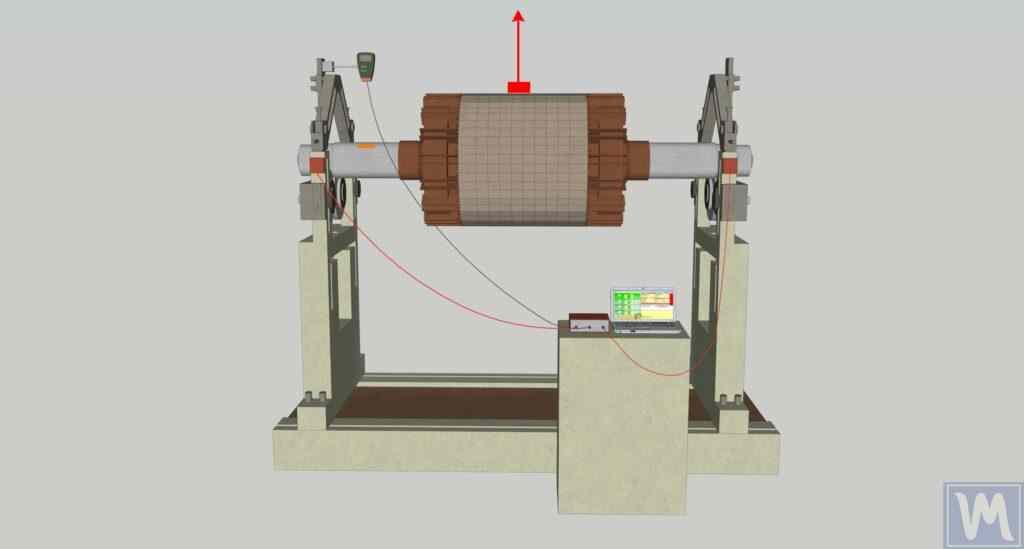
Međutim, za duge rotore (poput osovine bubnja kosilice s drobilicama ili šumskog malčera), statičko balansiranje nije dovoljno. Zamislite da jedan kraj rotora ima teško mjesto na vrhu, a drugi kraj ima teško mjesto na dnu. Kada rotor mirno stoji na nosačima, te suprotstavljene sile se uravnotežuju i rotor se možda uopće neće kotrljati - pa se čini "uravnotežen" u statičkom smislu. Ali u trenutku kada zavrtite taj rotor radnom brzinom, centrifugalne sile povucite te teške točke prema van u različitim ravninama i rotor će vibrirati kao lud. Ova vrsta neravnoteže koja se otkriva samo kada se rotor okreće naziva se dinamička neravnotežaStatičke metode to ne mogu ispraviti jer uključuje neravnotežu u dvije ili više ravnina duž duljine rotora.
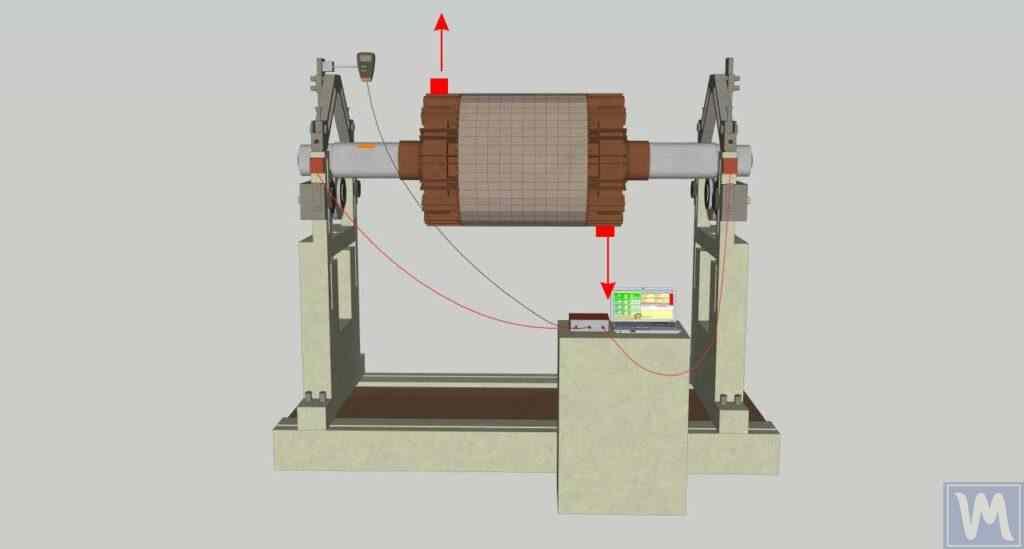
Jedini način za rješavanje dinamičke neravnoteže je korištenje odgovarajuće opreme za dinamičko balansiranje. dinamički balanser (bilo prijenosni uređaj ili stroj za balansiranje pune veličine) može identificirati neravnotežu na svakom kraju (svakoj ravnini) rotora i točno vam reći gdje i koliko težine dodati ili ukloniti kako biste je suzbili. Ukratko, dok bi DIY metode mogle riješiti osnovnu statičku neravnotežu, dugi rotori malčera zahtijevaju dinamičko balansiranje u dvije ravnine sa specijaliziranim alatima za stvarno uklanjanje vibracija.
Proces dinamičkog balansiranja pomoću uređaja Balanset-1A
Dakle, kako dinamičko balansiranje izgleda u praksi? Na terenu možete koristiti prijenosni komplet za balansiranje (kao što je Balanset-1A) za uravnoteženje rotora na vašem stroju. U nastavku slijedi pregled korak-po-korak proces za dinamičko balansiranje rotora kosilice pomoću takvog uređaja:
- Montirajte senzore: Ugradite senzore vibracija na oba kraja rotora, što bliže nosačima ležajeva. Svaki senzor treba biti orijentiran okomito na os rotora (za mjerenje radijalnih vibracija).
- Pričvrstite reflektirajući marker: Zalijepite mali komad reflektirajuće trake ili slične oznake na rotor (na primjer, na remenicu ili sam rotor). Tahometar će to koristiti za mjerenje brzine vrtnje i faze.
- Postavite laserski tahometar: Postavite fototahometar na magnetsku podlogu i postavite ga tako da njegova laserska zraka može detektirati reflektirajuću oznaku pri svakom okretu rotora.
- Spojite hardver: Uključite senzore vibracija u uređaj za balansiranje (npr. Balanset-1A uređaj). Spojite uređaj na prijenosno računalo ili tablet na kojem je pokrenut specijalizirani softver za balansiranje.
- Konfigurirajte softver: Pokrenite program za balansiranje i odaberite opciju za balansiranje u dvije ravnine (budući da se radi o dugom rotoru, potrebno je dinamičko balansiranje u dvije ravnine).
- Ulazna kalibracijska težina: Izvažite mali probni uteg (na primjer, nekoliko unci metala) koji će se koristiti za kalibraciju. Unesite njegovu točnu težinu i radijus pod kojim ćete ga pričvrstiti na rotor u softver.
- Uzmite početna očitanja: Pokrenite rotor i pustite ga da se vrti radnom brzinom (ili sigurnom brzinom ispitivanja). Senzori mjere početnu magnitudu vibracija i fazni kut na svakom kraju. Zabilježite osnovne razine vibracija.
- Pričvrstite probni uteg na ravninu 1: Zaustavite rotor. Pričvrstite kalibracijski (probni) uteg na rotor u prvoj ravnini (ravnina 1, koja odgovara jednom kraju rotora, blizu mjesta prvog senzora). Označite točan kutni položaj gdje ste postavili ovaj uteg.
- Izmjerite vibracije probnim utegom: Ponovno pokrenite rotor s pričvršćenim probnim utegom. Očitavanja vibracija će se promijeniti zbog dodanog utega. Pazite da dobijete značajnu promjenu (promjenu amplitude vibracija od najmanje ~20% ili jasan pomak faze); to osigurava da su podaci korisni za izračune.
- Premjestite probni uteg u ravninu 2: Zaustavite rotor i premjestite isti probni uteg u drugu ravninu (ravnina 2, blizu drugog kraja rotora kod drugog senzora). Pratite orijentaciju utega (kut) u odnosu na neku referentnu točku (poput gornje mrtve točke ili oznake na rotoru).
- Ponovno izmjerite na ravnini 2: Pokrenite rotor s probnim utegom u drugoj ravnini i zabilježite očitanja vibracija tijekom ovog pokretanja.
- Izračunajte korektivne utege: Softver sada ima tri podatkovne točke: početnu neravnotežu, utjecaj težine na ravninu 1 i utjecaj na ravninu 2. Izračunat će točnu težinu potrebnu za protutežu rotora na svakoj ravnini i točan kut pod kojim treba postaviti svaki uteg. (Kut se obično daje u odnosu na položaj probnog utega i u smjeru rotacije.)
- Uklonite probni uteg: Zaustavite rotor i skinite kalibracijski uteg jer je on ispunio svoju svrhu.
- Primijenite kompenzacijske utege: Pripremite stvarne kompenzacijske utege prema preporuci softvera (na primjer, izrežite čelične komade određene mase). Zavarite ili čvrsto pričvrstite ove utege na rotor na naznačenim pozicijama za ravninu 1 i ravninu 2.
- Testirajte ravnotežu: Na kraju, još jednom pokrenite rotor radnom brzinom kako biste provjerili razinu vibracija nakon dodavanja kompenzacijskih utega. Vibracije bi trebale biti znatno niže. Ako softver uređaja pokazuje blagu preostalu neravnotežu, možete je fino podesiti dodavanjem malih dodatnih utega ili premještanjem prema potrebi. Nakon što očitanja pokažu da su vibracije unutar prihvatljivih granica, rotor je uspješno uravnotežen.
Ura, rotor naše kosilice je uravnotežen! Stroj bi sada trebao raditi puno glatkije, s minimalnim vibracijama.
Zašto moja malčerska kosilica i dalje vibrira nakon balansiranja?
Ponekad, čak i nakon procesa balansiranja, rotor može i dalje vibrirati ili čak izgledati gore nego prije. U idealnom scenariju, slijedeći gore navedene korake potpuno bi uklonili vibracije. Ali u stvarnom svijetu, razni problemi mogu spriječiti uspješno balansiranje. Ako vaša kosilica i dalje vibrira nakon što ste pokušali balansirati rotor, to je vjerojatno zbog jednog (ili više) ovih čimbenika: mehanički problemi sa strojem, nepravilni uvjeti tijekom procesa balansiranja ili pogreške u načinu na koji je balansiranje izvršeno.
Analizirajmo svako od ovih potencijalnih problematičnih područja:
Mehanički problemi koji mogu spriječiti balansiranje
- Nedostajući ili oštećeni mlatilice: Provjerite jesu li svi noževi ili čekići prisutni, pravilno pričvršćeni i u sličnom stanju. Ako nedostaje jedan ili više čekića ili ako su neki znatno istrošeniji ili lakši od drugih, rotor će biti inherentno neuravnotežen. Uvijek mijenjajte čekića u setovima kako biste održali ravnotežu rotora.
- Oštećeni ili istrošeni ležajevi: Ako su ležajevi rotora istrošeni, imaju preveliki zazor (labavost) ili su previše zategnuti ili oštećeni, rotor se neće pravilno okretati. Svaki napor balansiranja bit će uzaludan dok ležajevi ne budu u dobrom stanju. Istrošeni ležaj može se klimati i sam stvarati vibracije.
- Savijena osovina: Ako je osovina rotora savijena, nikakvo podešavanje težine neće popraviti vibracije. Savijeni rotor treba ispraviti ili zamijeniti jer uzrokuje stalno njihanje sa svakom rotacijom.
- Labave točke pričvršćivanja: Provjerite točke pričvršćivanja kosilice s drobilicom ili malčera (kako se spajaju na traktor ili okvir). Ako su vijci labavi ili su nosači istrošeni, cijeli stroj se može tresti, stvarajući dojam da je rotor neuravnotežen, a uzrok je labav spoj. Slično tome, svaka labavost dijelova poput prednjeg dijela kosilice ili ručke za guranje/okvira malčera može uzrokovati vibracije ili buku koja ometa uravnoteženje.
- Udar rotora u druge dijelove: Pazite da rotor ne dodiruje nijedan nepokretni dio stroja (poput gumenog štitnika, bočne stijenke ili dijela okvira). Čak i lagani kontakt pri velikoj brzini uzrokovat će buku i vibracije koje se ne mogu "uravnotežiti".
- Pukotine na tijelu kosilice: Ako je struktura kosilice napuknuta, vibracije rotora mogu rezonirati i pojačavati se kroz napuknute dijelove. Struktura se može neovisno savijati ili vibrirati. Takve pukotine potrebno je popraviti kako bi se vratila cjelovitost (i odgovarajuća krutost) stroja prije balansiranja.
- Otpad unutar rotora: Ponekad se materijal (poput prljavštine ili pijeska) može nakupiti unutar šupljeg bubnja rotora. Ako se ta labava težina pomiče, mijenjat će neravnotežu svaki put kada okrećete rotor. Jedan od karakterističnih znakova je ako svaki test daje izrazito različite vrijednosti vibracija. U takvim slučajevima trebali biste očistiti unutrašnjost rotora prije nego što pokušate uravnotežiti ga.
Improper Balancing Conditions
- Problemi s rezonancijom: Ako je radna brzina rotora na ili blizu prirodne rezonantne frekvencije stroja ili traktora, čak i mala neravnoteža može uzrokovati nesrazmjerno velike vibracije. Važno je osigurati da stroj ne pojačava vibracije zbog rezonancije. Ponekad dodavanje ili uklanjanje potpornja ili mala promjena brzine mogu izbjeći rezonanciju tijekom procesa balansiranja.
- Promjena uvjeta usred procesa: Stanje stroja tijekom balansiranja treba ostati konstantno. Ako podignete kosilicu, dodate potporu, uklonite ploču ili promijenite bilo što u postavkama između probnih vožnji, to može promijeniti očitanja. Na primjer, balansiranje rotora s kosilicom na tlu u odnosu na onu koja visi u zraku može dati različite rezultate jer se promijenila krutost sustava. Uvijek održavajte uvjete istima za sva mjerenja.
- Neravnomjerna brzina ili gas: Pokušajte pokretati rotor istim brojem okretaja u minuti za svako mjerenje. Velike fluktuacije brzine između mjerenja mogu uzrokovati nekonzistentnost podataka o vibracijama. Idealno bi bilo koristiti konstantnu brzinu motora (ili elektronički regulator) za održavanje broja okretaja u minuti tijekom svakog ispitivanja.
Uobičajene pogreške pri korištenju uređaja za balansiranje
- Greške pri montaži senzora: Priložite vibration sensors sigurno na čistoj, ravnoj površini stroja. Ako je senzor nagnut, nalazi se na prljavštini ili masnoći ili nije čvrsto magnetiziran, može dati netočna očitanja. Također provjerite da senzor nije postavljen blizu ruba ili fleksibilne ploče koja može vibrirati drugačije od glavne strukture.
- Neusklađenost tahometra: Ako se laserski tahometar pomiče ili mijenja tijekom procesa, očitanja faze bit će netočna. Pričvrstite tahometar na mjesto i izbjegavajte udarce. Dvaput provjerite pogađa li laser pouzdano reflektirajuću oznaku pri svakom okretanju.
- Pogreške u izračunu kuta: Nakon što se test provede s probnim utegom, softver će odrediti gdje postaviti korektivne utege, često dajući kut (u stupnjevima) od referentne točke. Uobičajena pogreška je pogrešno shvaćanje ovog kuta - na primjer, mjerenje u pogrešnom smjeru oko rotora. Uvijek mjerite kut u smjeru rotacije (osim ako nije drugačije navedeno) od reference (obično položaj probnog utega ili označena točka od 0°).
- Probni uteg je premalen: Ako je probni uteg premalen u odnosu na masu rotora, možda neće uzrokovati primjetnu promjenu vibracija (što će podatke učiniti manje pouzdanima). Ako dodate probni uteg i ništa se ne promijeni u očitanjima vibracija, pokušajte upotrijebiti teži probni uteg (unutar sigurnih granica) koji proizvodi promjenu amplitude vibracija od najmanje 20%.
- Smetnje sa senzorom tahometra: Jaka sunčeva svjetlost ili reflektirajuća svjetla mogu ometati sposobnost optičkog tahometra da detektira marker. Ako balansirate vani po sunčanom danu, možda ćete morati zasjeniti senzor ili to učiniti u tamnijem okruženju, posebno ako primijetite nepravilna očitanja okretaja ili faze.
Često postavljana pitanja
Kako mogu znati je li rotor moje kosilice nebalansiran?
Prekomjerne vibracije su najveći pokazatelj. Ostali znakovi upozorenja uključuju neobične zvukove zveckanja, brže trošenje ili kvar ležajeva nego inače, stalno otpuštanje vijaka i pričvršćivača, pukotine koje se pojavljuju na okviru kosilice ili čak osjećaj da se vibracije prenose na traktor. Ako primijetite kombinaciju ovoga, vaš rotor vjerojatno nije uravnotežen.
Mogu li balansirati rotor malčera bez stroja za balansiranje?
Možete ispraviti jednostavnu static imbalance sami (protivtežom teže strane rotora dok ne ostane u ravnini). Međutim, vi ne može popraviti dinamička neravnoteža bez specijalizirane opreme. Dugi rotori malčera obično imaju dinamičku neravnotežu koju samo odgovarajući dinamički balanser (ili stroj za balansiranje) može otkriti i ispraviti.
Kako dinamički uravnotežiti rotor malčera?
Dinamičko balansiranje zahtijeva poseban alat ili stroj. U praksi, na stroj se pričvršćuju senzori, laserskim tahometrom se prati rotacija rotora, dodaje se ispitni uteg kako se vidi kako utječe na vibracije, a zatim se izračunava gdje zavariti trajne protuutege kako bi se poništila neravnoteža. Uređaj poput Balanset-1A pomaže u automatizaciji ovih mjerenja i izračuna, vodeći vas do točne težine i položaja potrebnog za balansiranje rotora.
Što se događa ako koristim malčer s nebalansiranim rotorom?
Stroj će biti izložen intenzivnim, štetnim vibracijama cijelo vrijeme rada. Te vibracije uzrokovat će puno brže trošenje dijelova - na primjer, ležajevi mogu više puta otkazati, a vijci ili druge komponente mogu se olabaviti ili slomiti. Vremenom, naprezanje može uzrokovati pucanje metalnih dijelova kosilice ili čak oštetiti traktor. Ukratko, rad s neuravnoteženim rotorom drastično skraćuje vijek trajanja vaše opreme i može dovesti do iznenadnih, skupih kvarova (a da ne spominjemo sigurnosne rizike).
Zaključak
Dinamičko balansiranje rotora malčera i šumskog mulčera ključni je zadatak održavanja kako bi se osigurao nesmetan i siguran rad. Utvrđivanjem je li neravnoteža vašeg rotora statička ili dinamička i korištenjem odgovarajuće opreme za rješavanje tog problema, možete eliminirati destruktivne vibracije i sve probleme koje uzrokuju. S uravnoteženim rotorom, vaša će se oprema manje trošiti, vaši će ležajevi i ostale komponente trajati dulje, a smanjit ćete i rizik od neočekivanih kvarova i sigurnosnih opasnosti. Ukratko, balansiranje je ulaganje u dugovječnost i pouzdanost vaših strojeva.
Uvijek imajte na umu da prije pokušaja balansiranja riješite sve mehaničke probleme (poput loših ležajeva ili nedostajućih noževa) i strogo slijedite odgovarajući postupak. Ako se pravilno izvede, dinamičko balansiranje može dramatično poboljšati performanse vaše kosilice. Mnogi operateri smatraju da nakon balansiranja stroj radi „kao nov“ - nema više zveckanja, nema prekomjernih vibracija i nema češćih popravaka.
Spremni ste smanjiti vibracije svoje kosilice i uštedjeti na troškovima popravka? Razmislite o korištenju prijenosnog dinamičkog balansera poput Balanset-1A podešavanje rotora na terenu. Možda se čini kao značajan napor, ali rezultat je glatkiji rad stroja, manje glavobolja oko održavanja i produktivnije vrijeme na terenu umjesto u servisu. Ako imate pitanja ili vam je potrebna stručna pomoć, slobodno nam se obratite - tu smo da vam pomognemo da izvučete maksimum iz svoje opreme.
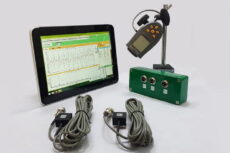
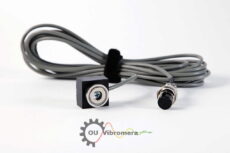
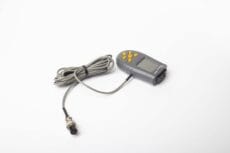
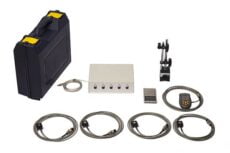



0 Komentari